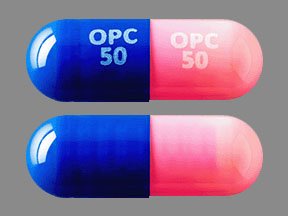Ongentys Disease Interactions
There are 6 disease interactions with Ongentys (opicapone).
Opicapone (applies to Ongentys) pheochromocytoma
Major Potential Hazard, Moderate plausibility. Applicable conditions: Adrenal Tumor
The use of opicapone is contraindicated in patients with pheochromocytoma, paraganglioma, or other catecholamine secreting neoplasms.
References
- (2020) "Product Information. Ongentys (opicapone)." Neurocrine Biosciences, Inc.
Opicapone (applies to Ongentys) psychosis
Major Potential Hazard, Moderate plausibility.
Opicapone may cause impulse control disorders including pathological gambling, increased libido, hypersexuality, compulsive spending or buying, binge eating, and compulsive eating. Patients with a major psychotic disorder should ordinarily not be treated with this drug because of the risk of exacerbating the psychosis with an increase in central dopaminergic tone.
References
- (2020) "Product Information. Ongentys (opicapone)." Neurocrine Biosciences, Inc.
Opicapone (applies to Ongentys) end stage renal disease
Moderate Potential Hazard, Moderate plausibility. Applicable conditions: Renal Dysfunction
The pharmacokinetics of opicapone have not been studied in patients with end stage renal disease. Caution is advised.
References
- (2020) "Product Information. Ongentys (opicapone)." Neurocrine Biosciences, Inc.
Opicapone (applies to Ongentys) hypotension
Moderate Potential Hazard, Moderate plausibility.
Opicapone may cause orthostatic blood pressure changes including fainting and dizziness and patients should be advised to avoid standing rapidly after sitting or lying down. Caution is advised in patients with hypotension.
References
- (2020) "Product Information. Ongentys (opicapone)." Neurocrine Biosciences, Inc.
Opicapone (applies to Ongentys) liver impairment
Moderate Potential Hazard, Moderate plausibility. Applicable conditions: Liver Disease
The mean overall plasma exposure (AUC) of opicapone increased by 84% in patients with moderate (Child-Pugh Class B) liver dysfunction. A dosage adjustment is required on these patients. The pharmacokinetics of this drug have not been studied in patients with severe liver dysfunction (Child-Pugh: C). Caution is advised.
References
- (2020) "Product Information. Ongentys (opicapone)." Neurocrine Biosciences, Inc.
Poicapone (applies to Ongentys) lactose intolerance
Moderate Potential Hazard, Moderate plausibility.
Opicapone formulations contain lactose. Caution is advised if used in patients with lactose intolerance.
References
- (2020) "Product Information. Ongentys (opicapone)." Neurocrine Biosciences, Inc.
Ongentys drug interactions
There are 276 drug interactions with Ongentys (opicapone).
Ongentys alcohol/food interactions
There are 2 alcohol/food interactions with Ongentys (opicapone).
More about Ongentys (opicapone)
- Ongentys consumer information
- Check interactions
- Compare alternatives
- Pricing & coupons
- Drug images
- Side effects
- Dosage information
- During pregnancy
- FDA approval history
- Drug class: dopaminergic antiparkinsonism agents
- En español
Related treatment guides
Drug Interaction Classification
| Highly clinically significant. Avoid combinations; the risk of the interaction outweighs the benefit. | |
| Moderately clinically significant. Usually avoid combinations; use it only under special circumstances. | |
| Minimally clinically significant. Minimize risk; assess risk and consider an alternative drug, take steps to circumvent the interaction risk and/or institute a monitoring plan. | |
| No interaction information available. |
Further information
Always consult your healthcare provider to ensure the information displayed on this page applies to your personal circumstances.


